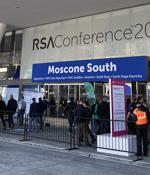Security News

With North Korean IT workers storming the gates, too RSAC Another RSA Conference has come and gone, with almost 44,000 attendees this year spread across San Francisco's Moscone Center and the...

Homeland Security boss Noem added as last-minute keynote, mind you RSAC There's a notable absence from this year's RSA Conference that kicked off today in San Francisco: The NSA's State of the Hack panel.…

Data pinched from pwned outside supplier, thief claims IntelBroker, a notorious peddler of stolen data, claims to have pilfered source code, private keys, and other sensitive materials belonging to Nokia.…

RSA Conference 2024 is taking place at the Moscone Center in San Francisco. Help Net Security is on-site, and this gallery takes you inside the event.

Your profile can be used to present content that appears more relevant based on your possible interests, such as by adapting the order in which content is shown to you, so that it is even easier for you to find content that matches your interests. Content presented to you on this service can be based on your content personalisation profiles, which can reflect your activity on this or other services, possible interests and personal aspects.

Google updates Google Security Operations and more with Gemini AI. Google is combining the security capabilities of information security company Mandiant and malware scanner VirusTotal with Gemini AI and Google's own user and device footprint in a new offering called Google Threat Intelligence. Available May 6 wherever Google Cloud Security is distributed, Google Threat Intelligence uses Gemini AI to get a top-down look at security data, competing with Microsoft's Copilot for Security.

Bruce Schneier was at the first ever RSA Conference in 1991, and he was the first 'exhibitor' in 1994 when he asked Jim Bidzos, Creator of the RSA Conference, if he could sell copies of his book "Applied Cryptography." Bidzos set Schneier up in the hotel lobby where the conference was being held-and the rest is history. Listen to some great RSA Conference memories on this episode of the History of RSA Conference.

Microsoft has announced that RSA keys shorter than 2048 bits will soon be deprecated in Windows Transport Layer Security to provide increased security. 1024-bit RSA keys have approximately 80 bits of strength, while the 2048-bit key has approximately 112 bits, making the latter four billion times longer to factor.

A new study has demonstrated that it's possible for passive network attackers to obtain private RSA host keys from a vulnerable SSH server by observing when naturally occurring computational...

A team of academic researchers from universities in California and Massachusetts demonstrated that it's possible under certain conditions for passive network attackers to retrieve secret RSA keys from naturally occurring errors leading to failed SSH connection attempts. A paper published by university researchers Keegan Ryan, Kaiwen He, Nadia Heninger, and George Arnold Sullivan, shows that it's possible for a passive network attacker to obtain a private RSA key from SSH servers experiencing faults during signature computation.